
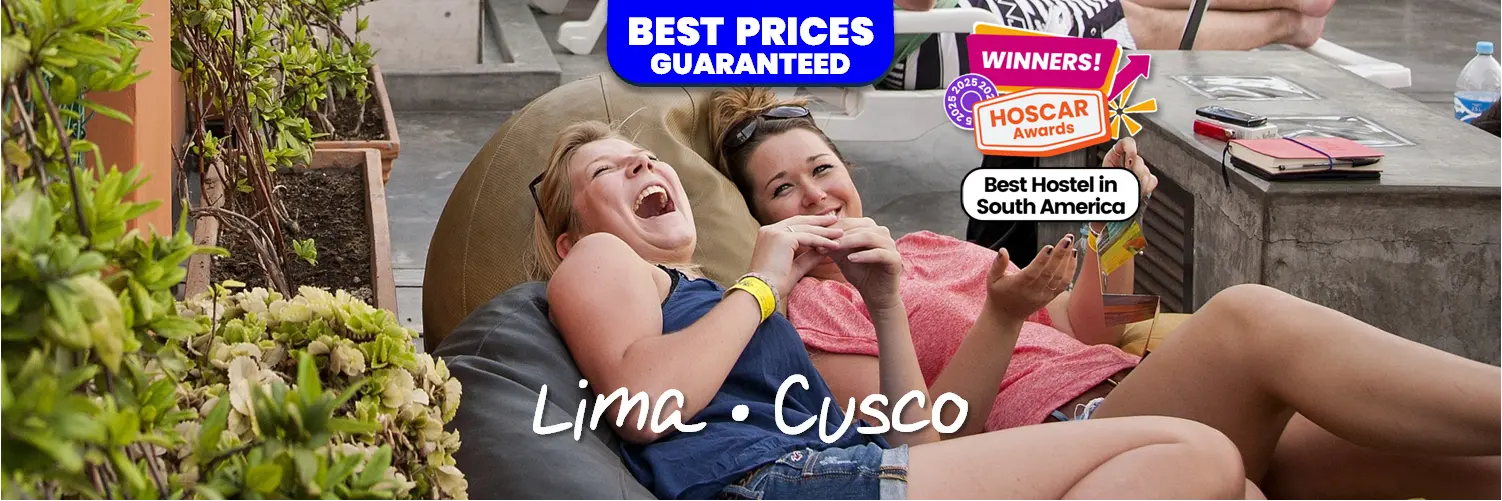
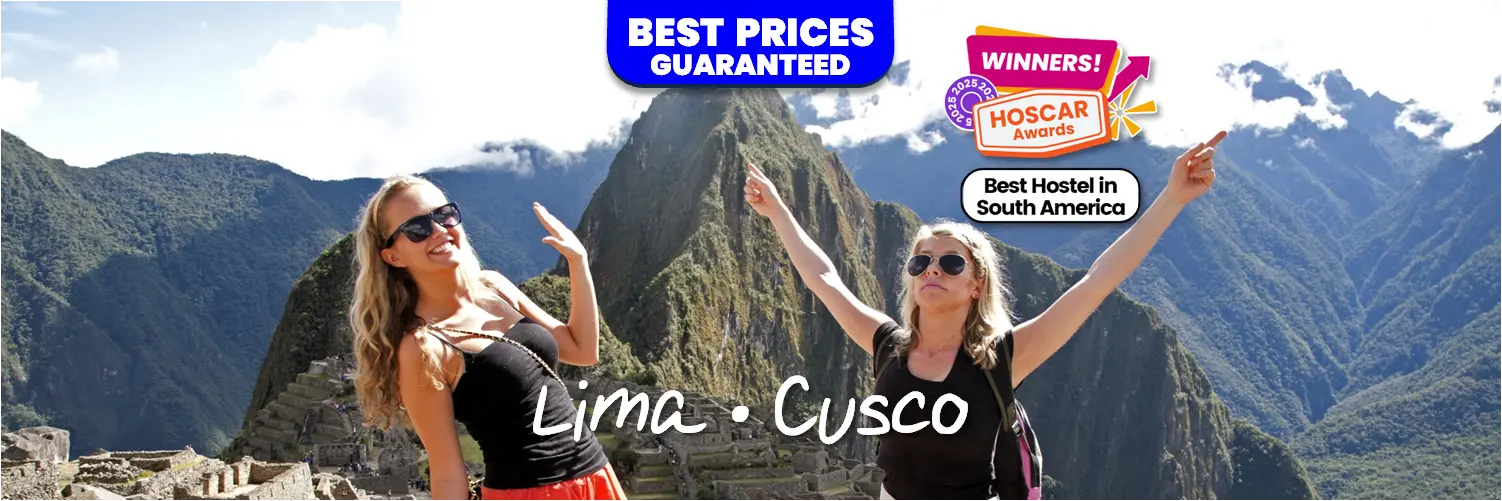
Everything you need to plan your trip — routes, tickets, treks, and tips to enjoy Machu Picchu open all year round
Updated October 2025
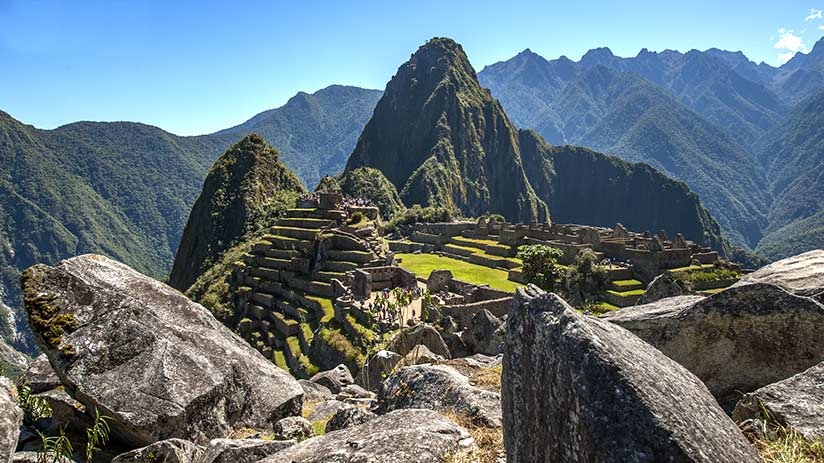
There are places you don’t just visit — you feel them. The Sacred Valley of the Incas and Machu Picchu are two of those rare spaces where mountains seem alive and time folds in on itself. For young travelers chasing more than a postcard shot, this route through southern Peru offers a perfect mix of history, energy, and adventure.
Stretching between Cusco and the edge of the Amazon, the Sacred Valley was once the agricultural and spiritual heart of the Inca Empire. Its endless terraces, temples aligned with the stars, and villages that still speak Quechua reveal a civilization that understood nature as sacred. Walking through it feels like traveling between centuries — the ancient and the living.
And then comes Machu Picchu, the final jewel of the route. Perched on a mountain ridge surrounded by clouds, this UNESCO World Heritage Site isn’t just one of the Seven Wonders of the Modern World — it’s a symbol of endurance and harmony with the land.
Here’s something every traveler should know: Machu Picchu is open all year round. Even during the rainy season (January–March), the site remains open to visitors. What does close each year in February is the Classic Inca Trail, temporarily shut down for maintenance — but all other routes, including trains, alternative treks like Salkantay or Lares, and the site itself, remain fully operational.
The dry season (May–September) brings clear skies and crisp mountain mornings, perfect for photos. The green season (November–March) offers fewer crowds, lush scenery, and softer light. In both, it’s smart to spend a day or two acclimatizing in Cusco before heading into the valley — hydrate well, walk slowly, and let your body adjust to the altitude.
This guide walks you through every step of the journey — from Pisac’s terraces to the narrow streets of Ollantaytambo, from the salt pans of Maras to the misty dawn at Machu Picchu. You’ll learn how to get there, which tickets to buy, what treks exist, and how to make the most of each stop. Because this trip isn’t just about reaching the site — it’s about everything that happens along the way.
👉 Planning to start your trip in Cusco? Check out the Backpacker Guide to Cusco 2025.

Reaching Machu Picchu isn’t difficult, but it does take some planning. There’s no direct road to the site, so you’ll need to combine buses, trains, and maybe a bit of hiking. Once you understand the route, it all flows smoothly.
Most travelers start in Cusco, then head to Ollantaytambo, the last town in the Sacred Valley connected by road before Machu Picchu.
You can get there:
By bus or shared taxi from Pavitos Street (1h45, around 15–20 soles).
By private taxi — faster and convenient if you’re traveling with friends.
Or as part of a Sacred Valley tour that includes stops in Pisac or Chinchero.
From Ollantaytambo, you have two main ways to reach Aguas Calientes (also known as Machu Picchu Pueblo):
1. By train – the classic and easiest route
Operated by PeruRail and IncaRail, trains run daily through scenic valleys and tunnels.
Duration: 1.5 to 2 hours.
Cost: starting at about $60 USD round trip for Expedition class.
Tip: book early, especially for morning departures during the high season.
2. Via Hidroeléctrica – the backpacker route
A more adventurous option that’s cheaper but longer.
Take a bus from Cusco to Santa Teresa and then to Hidroeléctrica (6–7 hours total).
From there, walk 10 km (2–3 hours) along the train tracks to Aguas Calientes.
Best for travelers with more time and a good pair of shoes.
Once in Aguas Calientes, it’s time for the final climb to the citadel:
By bus: departs every 10 minutes, takes 25 minutes, and costs about $12 USD each way.
On foot: 60–90 minutes of uphill stone steps — steep but free and full of views.
Plan your timing carefully. Your train, bus, and entry ticket need to line up. The easiest way is to spend the night in Aguas Calientes and head up early the next morning.
Machu Picchu is open every single day of the year, from 6:00 a.m. to 5:00 p.m. (last entry at 3:00 p.m.). Even when the Inca Trail closes in February, the site stays open as usual.
👉 Want more detail on ticket types and routes? Check the Complete Machu Picchu Ticket Guide.
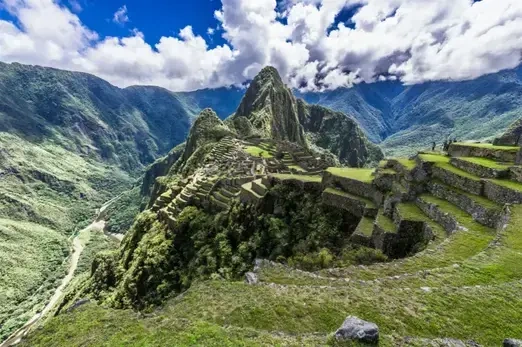
Since 2021, visiting Machu Picchu means choosing from official circuits — specific paths that regulate the flow of visitors. Picking the right one can make the difference between a quick walk and a full, unforgettable experience.
Circuit 1: Upper area with panoramic viewpoints (perfect for the classic photo).
Circuit 2: The most complete — includes the panoramic area and the main temples.
Circuit 3: Short lower route, ideal if you’re coming from the Machu Picchu Mountain trail.
Circuit 4: Lower area with access to Huayna Picchu.
For most backpackers, Routes 2A and 2B are the sweet spot: the most complete view plus the main archaeological highlights — the Temple of the Sun, the Sacred Rock, the Temple of the Condor, and the terraces.
Huayna Picchu: the steep peak in every postcard shot. Limited spots, intense climb, epic view.
Machu Picchu Mountain: longer but easier, with panoramic views of the citadel and valley.
Inca Bridge: short, peaceful route for those who prefer a gentler walk.
The only official site is machupicchu.gob.pe.
Buy your ticket at least three weeks in advance during the dry season (May–September). Spots for Huayna Picchu can sell out months ahead.
No re-entry once you exit the site.
No drones, tripods, food, or large backpacks.
Tickets are personal and require your passport for entry.
Machu Picchu never closes, even in February when the Classic Inca Trail is under maintenance. The rainy season may bring mist, but it also means fewer crowds and softer light — a dream for photographers.
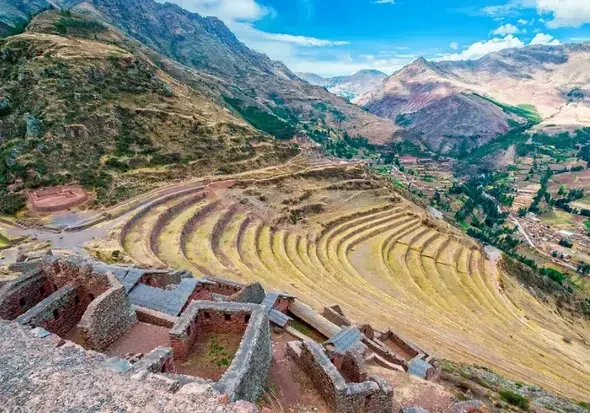
Just 33 km from Cusco, Pisac is where the Sacred Valley truly begins. The mountains open up, the air gets warmer, and terraces trace the hillsides like stairways built for the gods.
The star here is the Pisac Archaeological Site, one of the largest and most impressive Inca complexes. The site covers the upper slopes above the town — a network of stone terraces, ceremonial centers, and ancient paths that once connected Cusco with the jungle. From the top, you can see the valley stretch endlessly below, dotted with farms and the Vilcanota River glinting in the sunlight.
You can reach the ruins by taxi (about 25 minutes) or hike up from the town — roughly 90 minutes uphill. The trail is steep but scenic, passing through agricultural terraces and watchtowers. Bring water, a hat, and patience; the altitude makes every step count.
Back down in the village, don’t miss the Pisac Market, one of the most colorful in the Andes. Here, local artisans sell handwoven textiles, pottery, and jewelry, while the smell of freshly baked empanadas fills the air. It’s a great place to pick up gifts or just people-watch with a fresh juice in hand.
Pisac can be visited in half a day, but staying until sunset is worth it — the light turns the terraces gold and the mountains deep purple. Entry is included in the Cusco Tourist Ticket, which also covers other Sacred Valley sites.

This trio of destinations shows the Valley’s incredible diversity — living culture, science, and surreal landscapes — all within a short drive of each other.
Chinchero feels like stepping back in time. Women in traditional red skirts and black hats weave on looms outside their homes, preserving ancient Andean techniques. In local workshops, you’ll see how alpaca and sheep wool are dyed using plants, minerals, and even crushed cochineal insects. It’s one of the best places to buy authentic textiles and understand how much knowledge is hidden in each thread.
A few kilometers away lies Moray, a circular marvel that looks like a giant amphitheater carved into the earth. But it wasn’t built for shows — it was an agricultural laboratory. Each terrace level has its own microclimate, allowing the Incas to experiment with crops at different altitudes. Standing in the middle feels like being inside a green spiral of silence.
Finally, head to Maras, home to over 3,000 dazzling white salt ponds that cascade down a reddish hillside. The salt has been harvested here since pre-Inca times, using the same method: channeling mineral-rich spring water into shallow pools and letting the sun do the work. The view of the bright salt contrasting with the red cliffs is one of the Valley’s most surreal sights.
You can visit all three sites in one day — by taxi, organized tour, or even mountain bike. Go early in the morning for soft light and fewer crowds, or stay until late afternoon for those golden tones photographers love.
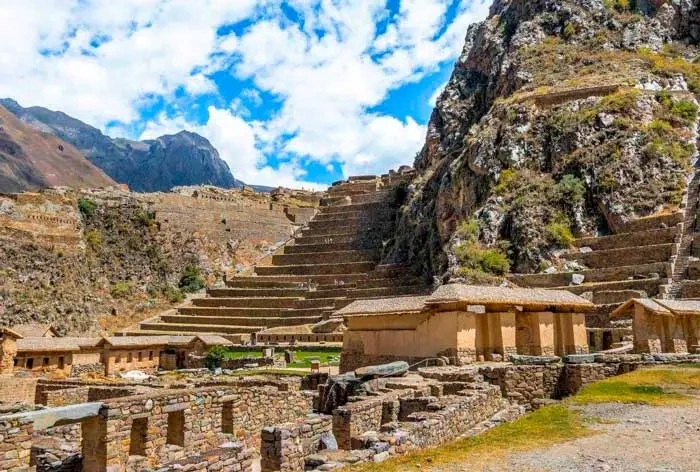
These two towns are the living core of the Sacred Valley — where travelers rest, eat well, and feel the pulse of Andean life before heading to Machu Picchu.
Urubamba is calm and spacious, surrounded by snowcapped peaks. It’s a good spot to recharge for a night or two. The town has a growing food scene with organic restaurants, yoga studios, and small markets full of local fruit. You’ll also find workshops making ceramics and natural cosmetics, all run by locals who blend tradition with creativity.
Twenty-five minutes down the road lies Ollantaytambo, the last living Inca town in Peru. Its cobbled streets, water canals, and massive stone walls have been in use for over 500 years. The Ollantaytambo Ruins dominate the valley — a mix of fortress and temple with terraces climbing up the mountainside. Climb to the top for a stunning view of the valley and the Temple of the Sun carved into the rocks.
Beyond the history, Ollantaytambo is also the main departure point for trains to Machu Picchu. Trains from PeruRail and IncaRail leave several times a day, so many travelers spend the night here to catch an early ride the next morning.
If you have extra time, the surroundings offer pure adrenaline: canopy ziplines, via ferrata climbing, rafting on the Urubamba River, and downhill biking through farmland trails.
Urubamba and Ollantaytambo together capture the essence of the Valley — living history, gentle rhythm, and a sense of anticipation before the final climb to Machu Picchu.
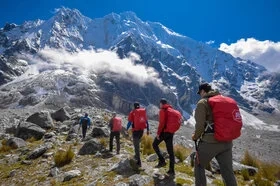
For many backpackers, the journey to Machu Picchu starts long before the first glimpse of its stone terraces. Hiking the ancient trails that once connected the Inca Empire is a way to experience Peru through rhythm and sweat — one step at a time. Each route has its own mood and difficulty, but all share a single reward: arriving at the Sun Gate at dawn, watching the mist lift over the citadel.
Classic Inca Trail (4 days / 3 nights)
This is the legendary route — and the only one that enters Machu Picchu directly through Inti Punku, the Sun Gate.
Duration: 4 days, 43 km (26 miles) through forests, ruins, and mountain passes.
Difficulty: Moderate to challenging.
Closed in February: for annual maintenance — but Machu Picchu itself remains open year-round.
Permits: Required, and must be booked months in advance through a licensed tour operator.
Salkantay Trek (5 days / 4 nights)
An independent, wild alternative with high mountain landscapes and glacier views.
Crosses the Salkantay Pass at 4,600 m (15,000 ft).
No permit needed.
A favorite for those seeking challenge and freedom.
Inca Jungle Trek (3–4 days)
A hybrid route that mixes adrenaline with culture.
Combines biking, rafting, zipline, and hiking.
Reaches Aguas Calientes through the lush jungle.
Perfect for energetic travelers on a budget.
Lares Trek (4 days / 3 nights)
A cultural route through remote Andean villages.
Passes by hot springs, alpaca herds, and textile communities.
Less crowded, offering a more personal connection with local life.
Short Inca Trail (1 day)
A condensed version for those short on time but eager to walk the original path.
Starts at KM 104 of the railway line.
Includes entry through the Sun Gate and a guided visit to the site.
Each trek tells its own story — of altitude, endurance, and quiet wonder. Whether you choose the Salkantay for its wild beauty or Lares for its cultural depth, remember: in the Andes, the journey is never just about the destination.
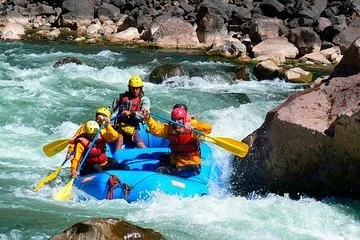
If you thought the Sacred Valley was just ruins and history, think again. It’s also one of South America’s top playgrounds for outdoor adventure — a natural gym of rivers, cliffs, and wind currents waiting to be explored.
Rafting on the Urubamba River
Between Cusipata and Ollantaytambo, the river offers rapids from class II to IV, depending on the season. The best months are April through November when the current is strong but manageable. Most tours include transport, safety gear, and a professional guide.
Canopy and Zipline
If you’ve ever wanted to fly over the Andes, here’s your chance. Zipline circuits in Maras, Pachar, and Urubamba offer multiple lines that cross deep valleys with views of snowcapped peaks.
Via Ferrata and the Skylodge
In Pachar, near Ollantaytambo, you can climb a vertical cliff using metal steps bolted into the rock. At the top, you’ll find panoramic views — and, for the brave, transparent capsule rooms where you can literally sleep hanging above the valley.
Mountain Biking
Trails between Moray, Maras, and Urubamba combine archaeology and downhill fun. You can rent a bike in Cusco or Urubamba or join a guided ride that includes equipment and support.
Paragliding over the Valley
Launch from the cliffs near Chinchero for a tandem flight that shows the Sacred Valley from an entirely new angle. The views of glaciers and patchwork farmland below are unforgettable.
All activities are run by local certified companies — check safety gear and weather conditions before you go. No need to be an athlete; just a little courage and curiosity go a long way in the Andes.

After winding through the valley, every traveler eventually arrives at Aguas Calientes, also known as Machu Picchu Pueblo — a tiny town surrounded by steep green mountains and the constant sound of the river below. It’s the last stop before the big moment.
Aguas Calientes is pure backpacker territory: narrow streets, hostels stacked on top of each other, coffee shops, pizza places, and travelers trading stories after long hikes. It might look chaotic, but there’s charm in its mix of movement and mist.
To unwind before your visit, soak in the thermal baths that give the town its name — about a 10-minute walk from the center. Or take a short hike to the Mandor Waterfalls, hidden in lush vegetation filled with orchids and hummingbirds.
Most visitors stay just one night. Arrive in the afternoon, rest, and wake up early to catch the first bus (5:30 a.m.) or start the climb on foot. The bus takes about 25 minutes; walking takes 60–90, depending on your pace.
The weather is humid and mild year-round. And here’s a crucial detail: Machu Picchu never closes. Even when the Classic Inca Trail shuts down in February, the site and all train routes remain open as usual.
Before heading up, make sure to have your ticket, passport, and water bottle ready — there are no shops or restrooms inside the archaeological park. Once inside, take your time. Sit for a moment and listen to the wind — it carries more stories than any guidebook could tell.
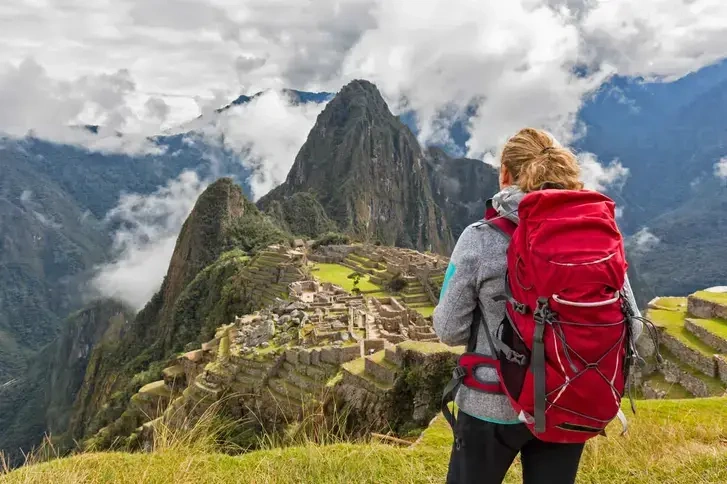
Reaching Machu Picchu is a dream, but small details can make the difference between a smooth trip and a stressful one. These tips are based on what backpackers actually learn along the way.
📅 Plan ahead.
Machu Picchu is open all year, even in February. But trains, tickets, and mountain permits (like Huayna Picchu) often sell out from May to September. Always buy tickets through the official website, machupicchu.gob.pe, or through a certified agency.
🕕 Best visiting hours.
The site opens at 6:00 a.m. and closes at 5:00 p.m. (last entry at 3:00 p.m.). Early morning (6:30–8:00 a.m.) and late afternoon (2:00–3:00 p.m.) are the quietest windows with the softest light for photos.
🎒 What to bring.
Passport and printed or digital ticket.
Water, sunscreen, insect repellent, and light snacks.
Rain poncho from November to March.
Comfortable layers — mornings are cold, afternoons warm.
Cash in soles (for bus tickets, restrooms, and snacks).
🚫 What not to bring.
No drones, tripods, umbrellas, or large backpacks. Food and trekking poles with metal tips aren’t allowed inside. There are lockers and bathrooms outside the main entrance.
☁️ Climate notes.
Dry season (May–September): sunny, crisp mornings, perfect visibility.
Rainy season (October–April): short showers, greener landscapes, fewer crowds.
Even when the Classic Inca Trail closes in February, Machu Picchu itself stays open daily.
📸 Small hacks.
The first bus is worth it — seeing the sunrise hit the stones is unforgettable.
Carry your camera or phone in a waterproof pouch.
After the guided circuit, sit quietly at a viewpoint. The silence is half the experience.
Machu Picchu rewards those who move slowly. Let the place set the rhythm — the Andes have been patient for centuries.
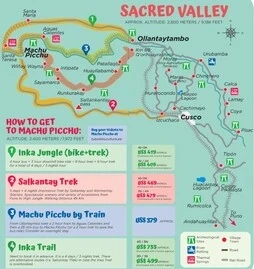
Every traveler moves at a different pace. Whether you want comfort and culture or hiking and sweat, both paths lead to the same wonder.
Day 1: Cusco → Pisac → Overnight in Urubamba
Visit Pisac’s ruins and market on your way down the valley. Adjust to the altitude, eat light, rest well.
Day 2: Chinchero, Maras & Moray → Overnight in Ollantaytambo
See weavers in Chinchero, the circular terraces of Moray, and the salt mines of Maras. Dinner in Ollantaytambo under starlight.
Day 3: Ollantaytambo → Train to Aguas Calientes
Morning visit to the fortress ruins, then hop on the train through mountain tunnels and along the Urubamba River.
Day 4: Machu Picchu → Return to Cusco
Climb at dawn, explore the citadel, and take your time. Afternoon train back toward Cusco.
Day 5: Chill day in Cusco
Coffee in San Blas, local food, maybe one last Pisco Sour. Let the trip sink in.
Officially, the Classic Inca Trail takes 4 days and 3 nights — arriving at Machu Picchu at sunrise on the final day.
It’s closed only in February, but Machu Picchu remains open all year.
Day 1: Cusco – Acclimatization & prep
Rest, check your gear, buy poncho and snacks, and meet your guide.
Day 2: Trailhead (Km 82) → Wayllabamba
Gentle hike through archaeological sites and lush valleys. First night camping under the stars.
Day 3: Dead Woman’s Pass (4,200 m)
The hardest day — steep climbs, thin air, and epic views at the top.
Day 4: Phuyupatamarca → Wiñay Wayna
Walk through cloud forests, orchids, and hidden ruins carved into the mountain.
Day 5: Inti Punku → Machu Picchu → Return to Cusco
Enter through the Sun Gate as dawn breaks over the citadel. Explore, rest, then take the train back.
Other Options:
Salkantay Trek (5D): glaciers, jungle, no permits needed.
Inca Jungle (4D): biking, rafting, zipline adventure.
Lares Trek (4D): quiet villages and natural hot springs.
Each route gives a different story — choose the one that fits your rhythm and your lungs.
Standing before Machu Picchu at sunrise, the world goes quiet. The clouds drift, the stones warm under the light, and you realize this city was built as much on belief as on stone.
Machu Picchu isn’t just an archaeological site — it’s a dialogue between humans and the mountain. The Incas placed it precisely where the sky, water, and earth meet. You don’t visit it; you’re invited to it.
The Sacred Valley, with its terraces, weaving villages, and ancient paths, teaches balance — between nature and culture, effort and awe. Each step here reminds you that travel can be more than movement; it can be gratitude.
Most travelers leave thinking they’ve reached the end of a journey, but really, something opens. Maybe it’s perspective. Maybe it’s the echo of the river winding below. Whatever it is, it lingers.
So take one last deep breath before leaving. Let the sound of the wind carry that moment with you — no souvenir can hold it better.
And if you’re hungry for what’s next, explore more of Peru through the Pariwana Hostels Blog — where every adventure starts with a good story, a shared table, and a backpack waiting for the next sunrise.